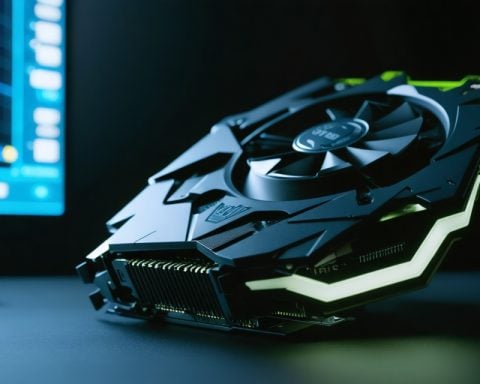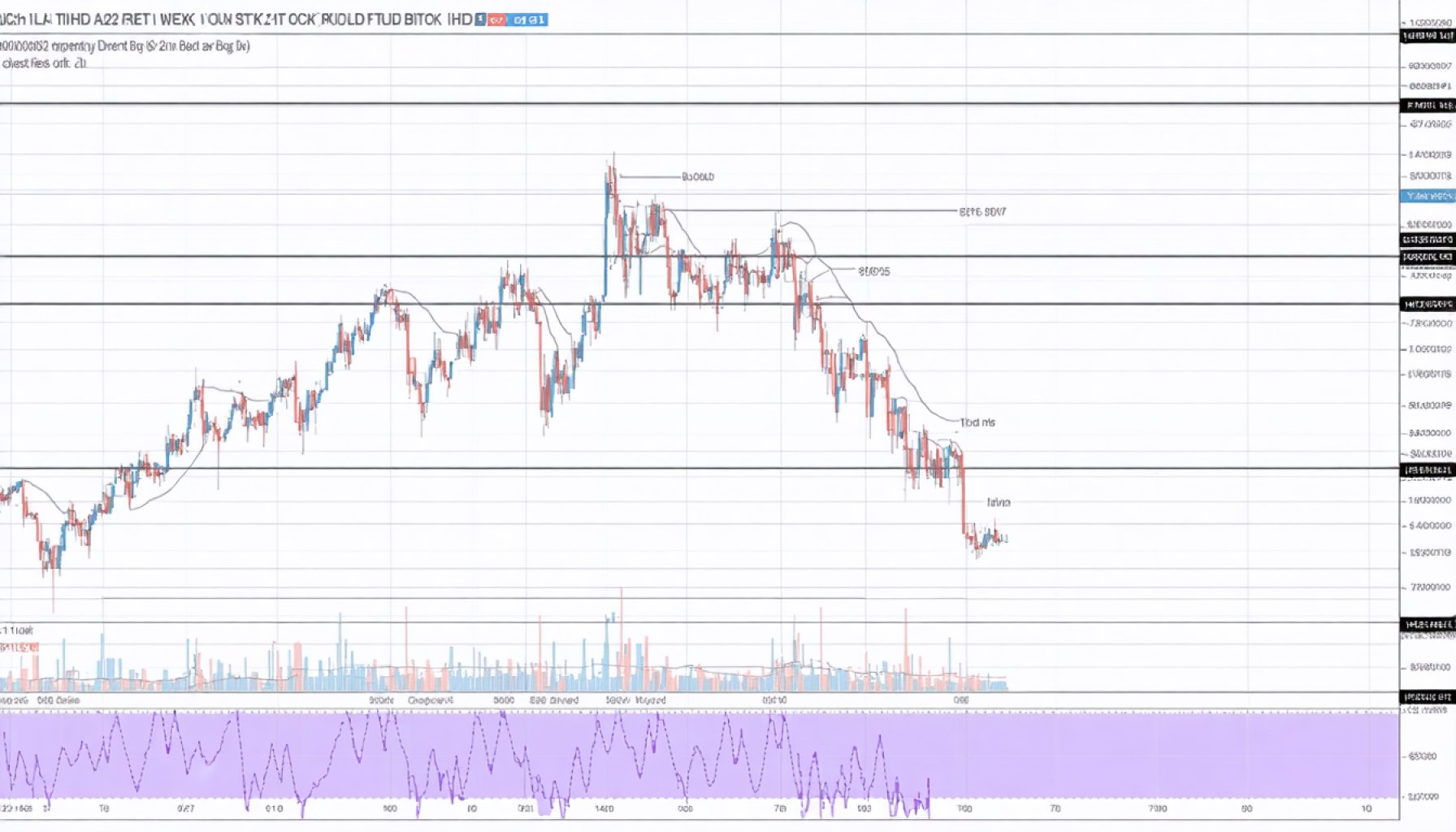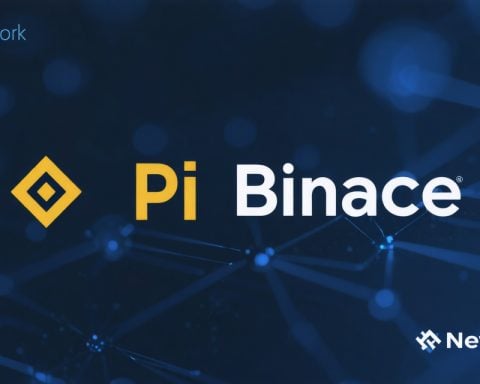- NVIDIA, a major player in the semiconductor industry, holds a significant market cap of $3.3 trillion, capturing traders’ attention as its earnings announcement approaches on February 26th.
- Over the past year, NVIDIA achieved $113 billion in revenue and a net income of $63 billion, solidifying its industry dominance.
- Post-earnings stock reactions are unpredictable, with a slight positive trend—1-day returns are favorable about 55% of the time.
- The correlation between 1-day and 5-day returns offers strategic insights, suggesting potential continued gains following a positive announcement day performance.
- Peer performances contribute to market volatility, influencing NVIDIA’s stock movement before official earnings results are shared.
- Success in trading NVIDIA’s stock hinges on understanding and leveraging historical patterns and market signals.
Anticipation hangs heavy as NVIDIA, the semiconductor behemoth with an eye-popping $3.3 trillion market cap, gears up to reveal its latest earnings figures. A storm could be brewing as traders eye the February 26th announcement like spectators waiting for fireworks. In the world of fast-moving numbers and ever-shifting markets, NVIDIA’s stock could dance anywhere between elation and dread, driven by its new financial revelations.
In the past year, NVIDIA raked in an astounding $113 billion in revenue, transforming this into a $63 billion net income—a testament to its industry prowess. Yet, the mystery unfolds in the short term. Historical data paints a picture of potential triumph or immediate setback, as post-earnings reactions reveal either a quick sprint upward or a stumble into a decline. Curiously, the odds favor a slight positive edge—1-day returns after these announcements tilt positive about 55% of the time.
But the real intrigue lies in the patterns beneath the surface. For savvy traders, understanding the correlation between 1-day and 5-day returns offers strategic insight. A positive outcome on the announcement day could herald continued gains, suggesting a well-timed “long” position might be tested. Peer performances add an extra layer of uncertainty, nudging Nvidia’s stock movement even before earnings hit the headlines.
As February’s tick-tock inches closer, observers and investors remain poised, hearts racing to the rhythm of NVIDIA’s financial symphony. The takeaway? In this domain, knowledge is power; those who decode past signals may just unlock the secret to capitalizing on high stakes and turbulent tides.
Will NVIDIA’s Earnings Announcement Be the Next Big Stock Catalyst?
How-To Steps & Life Hacks
For investors looking to maximize their returns around NVIDIA’s earnings announcement, consider these steps:
1. Analyze Past Data: Review historical stock performance post-earnings announcements to understand trends. Analyze previous quarters for patterns in 1-day and 5-day returns.
2. Set Alerts: Use trading platforms to set alerts for significant stock movements on or around the announcement date. This helps you react swiftly to market changes.
3. Diversify: Hedging against potential losses by diversifying your portfolio can mitigate risks associated with a single company’s earnings outcome.
4. Stay Informed: Follow credible financial news sources and analysts for insights and updates leading up to the announcement.
Real-World Use Cases
NVIDIA’s financial performance impacts numerous industries due to its role in powering AI, gaming, and data centers:
– AI Development: Companies developing machine learning models rely heavily on NVIDIA’s GPUs for processing power.
– Gaming: The gaming sector watches NVIDIA closely for trends that could influence console and PC gaming performance.
– Automotive: NVIDIA chips are pivotal in the development of autonomous vehicles, influencing innovations within the automotive tech industry.
Market Forecasts & Industry Trends
NVIDIA sits at the intersection of several high-growth tech sectors:
– AI and Machine Learning: Projected to grow tremendously, NVIDIA’s advancements in GPU technology are critical in driving this expansion.
– Gaming: Expected to grow with new hardware and more immersive experiences, NVIDIA’s GPUs are central to this evolution.
– Data Centers: As cloud computing expands, NVIDIA’s involvement in enhancing data processing capabilities underscores its market importance.
Reviews & Comparisons
When evaluating NVIDIA’s stock, consider comparisons with competitors such as AMD and Intel. NVIDIA’s products usually lead in graphical processing power, but competitors may offer advantages in pricing or energy efficiency. Analysts often emphasize:
– Performance: NVIDIA’s GPUs typically outperform when it comes to high-end graphic and AI processing capabilities.
– Value: AMD often provides competitive alternatives at different price points, appealing to budget-conscious consumers.
Controversies & Limitations
– Supply Chain Issues: Like many tech companies, NVIDIA faces challenges related to semiconductor shortages and supply chain disruptions.
– Regulatory Scrutiny: Potential acquisition deals and operations are occasionally scrutinized by regulators, impacting stock volatility.
Features, Specs & Pricing
NVIDIA offers a range of products from consumer-grade GeForce GPUs to powerful data center solutions like A100 Tensor Core GPUs. Pricing varies significantly:
– GeForce GPUs: These cost from $250 to over $1000, catering to both casual gamers and gaming enthusiasts.
– Professional GPUs: Often priced in the thousands due to specialized capabilities for AI and data processing.
Security & Sustainability
NVIDIA is advancing in eco-friendly technology with more energy-efficient GPUs and initiatives to reduce its carbon footprint. Security measures are robust, focusing on protecting user data and intellectual property.
Insights & Predictions
Analysts predict that NVIDIA’s involvement in emerging fields like AI, machine learning, and autonomous driving will continue to drive stock performance. However, short-term fluctuations around earnings calls are expected.
Tutorials & Compatibility
NVIDIA offers a plethora of tutorials for developers through its NVIDIA Developer portal, providing resources for optimizing GPU performance and integrating AI applications.
Pros & Cons Overview
Pros:
– Leading technology in high-performance GPUs.
– Strong foothold in growth markets like AI and gaming.
Cons:
– High stock valuation, leading to potential volatility.
– Challenges with supply chain and component costs.
Actionable Recommendations
1. Exercise Caution: Approach NVIDIA’s earnings announcement with a balanced perspective—acknowledge the volatility but recognize the long-term potential.
2. Stay Educated: Continuously update your knowledge on industry trends and NVIDIA’s market position to make informed investment decisions.
3. Leverage Financial Tools: Utilize simulators or demo accounts to test strategies without financial risk.
For more information on the latest technologies and tips, visit NVIDIA.



















